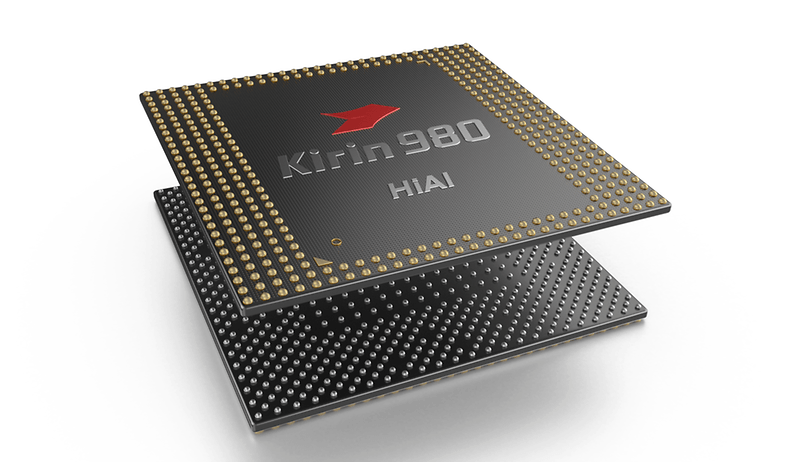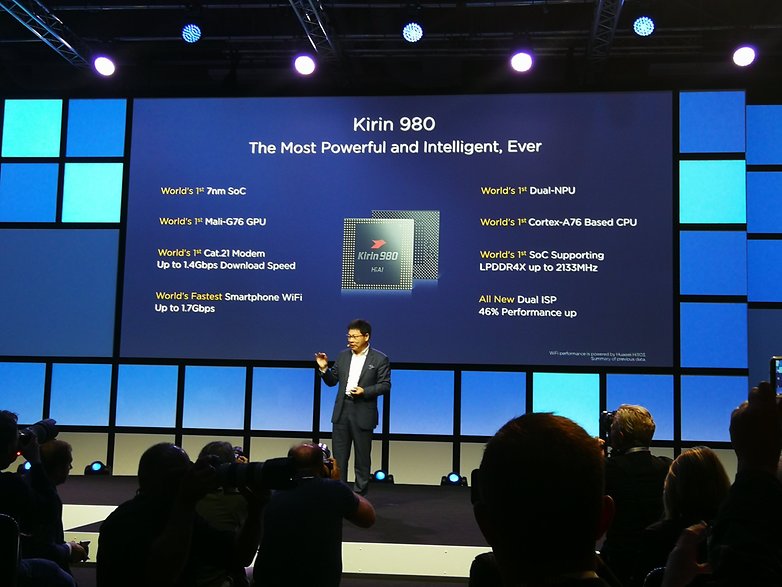Is Huawei selling magic beans? The Kirin 980 looks too good to be true

Faster performance, AI optimization, quicker WiFi, future 5G connectivity, better gaming stability, increased camera quality and ALL whilst reducing power consumption by 40 percent? If it looks too good to be true, it usually is.
Huawei’s new Kirin 980, revealed at IFA 2018 in Berlin today, is a record-breaker. It is the first of many things, but the new SoC uses a 7-nanometer process for the first time and, as a result, the Chinese manufacturer has managed to squash 6.9 billion transistors into 1 cm². Huawei wowed viewers at its press conference with a whole host of impressive stats, but how much of it is snake oil?

To give you an idea of why I’m skeptical, let’s run through a brief summary of what Huawei says this thing can do. Overall performance is up 75% compared to the Kirin 970. At the same time, overall power efficiency is up 58%. CPU performance is 37% better than a Snapdragon 845 but is 32% more power efficient. For bandwidth, you’re working with 20% more, whilst latency is 22% less. Average framerate for gaming is 58.8 fps, compared to 54.1 on an S845. WiFi peaks at 1732 Mbps, compared to 1083 Mbps on the S845.
Camera processing is 46% faster and recording latency is reduced by 33%. The Dual-NPU can recognize 4500 images a minute, compared to 2371 in the S845. However, you’ll save 23% battery at the same time.
How is all this possible?
Huawei says it is achieving all of this magic thanks to AI technology. It’s not as complicated as it sounds, actually. The all-new CPU consists of three Cortex parts. CEO of Huawei Technologies Consumer Business Group, Richard Yu, charmingly calls them ‘big, medium and small’.
The big one is your turbo performance, delivering you optimal power whilst feasting on your battery like a hungry journalist at an IFA buffet car. The little one goes about its business in a much calmer way, nursing your battery with small nibbles only.
The ‘flex-schedule’ system decides what combination of ‘big, medium and small’ you need to get the job done without killing your battery life. If you are listening to music, for example, the little guy is more than enough. Fire up a heavy-load game and all three will kick into action.

It all sounds pretty impressive on paper, but that’s all it is right now. Yu presented us with all kind of performance comparisons fancy stats but the truth is, we just don’t know if this thing is really going to deliver until we get out hands on a smartphone that is using it.
We should know more by the time the Mate 20 Pro is launched in London on October 16. For now, I’m trying to stay optimistic. If the 980 can do what Huawei says it can, and it could set a new benchmark for the market. But there is still that nagging skepticism in the back of my mind. It is Huawei’s job to talk this thing up, but don’t sell me magic beans if you can’t deliver me a beanstalk.
What do you think of Huawei's claims? Is anyone else raising a skeptical brow?




Skeptical.
the kirin 970 in my mate 10 operates exactly as it should. it was supposed to operate at a similar level to the sd835, and that's exactly what it does. only thing that really falls behind is graphics/audio. day to day it's exactly what the benchmarks say.
With so much processing power, the new smartphones are already stronger than many of the desktop computers. I really wonder if it's such a huge processing power for some portable devices. Just for voice calls or even videoconferencing, for taking pictures and even for 4K movies, there are more than enough existing CPUs.
From one generation to the next there are so many new features, some absolutely not useful, so I sit and ask myself at this pace of processor development, where they will get these wonderful gadgets, which we quite improperly say we call "telephones".
I'm skeptical, particularly in place in a phone in the real world. Maybe on a cooled test bench setup.